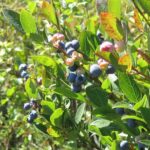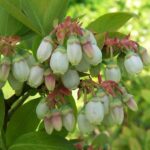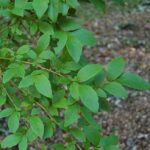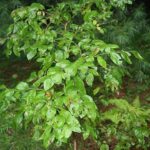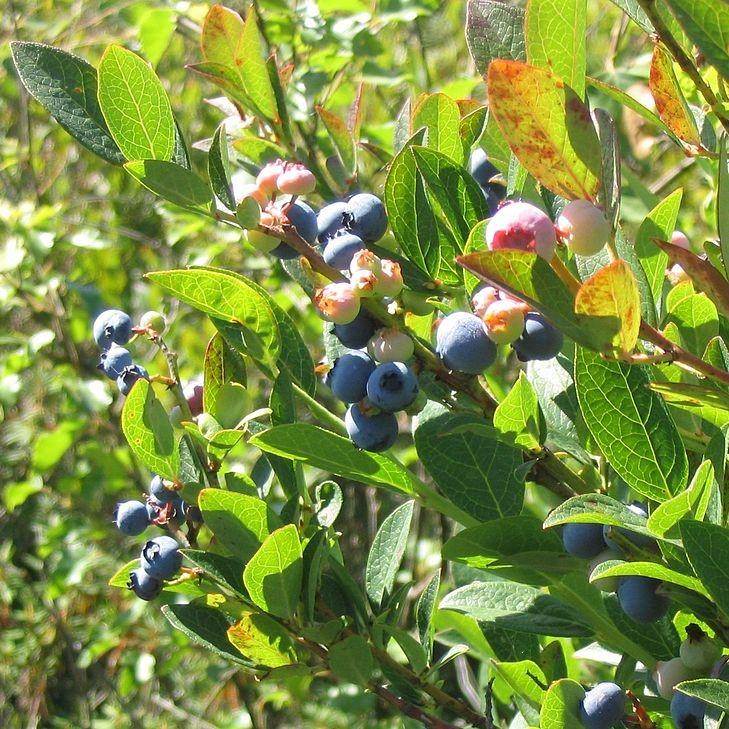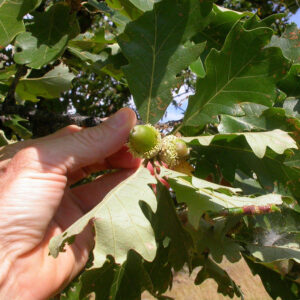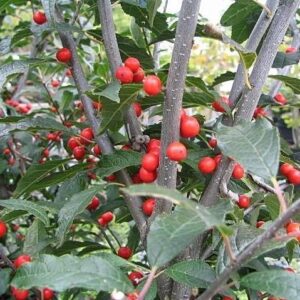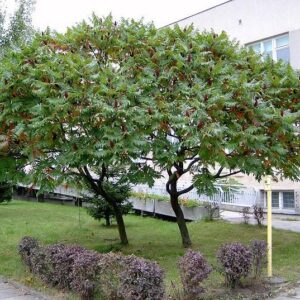Highbush Blueberry is a slow-growing upright native deciduous shrub that produces sweet edible blue berries that ripen in mid to late summer. Its elliptical dark green foliage turns shades of bright coppery red in fall. The loose pendulous clusters of white spring flowers give way to the signature berries. Grows best with full sun and rich, moist acidic well-drained soils. While self-fertile, cross-pollination will produce a better crop.
Vaccinium corymbosum are highly valuable for wildlife as well, being listed as a host plant for 32 different butterflies and moths, and provides nectar to several specialized bees.
|
Type: |
Shrub |
|
Origins: |
East N. America; GA Native |
|
Height: |
6′ – 12′ |
|
Spread: |
8’ – 12′ |
|
Spacing: |
10′ |
|
USDA Hardiness Zone: |
5 – 8 |
|
Culture: |
Full Sun, Part Sun |
|
Bloom Color: |
White |
|
Season of Interest: |
Spring, Summer, Fall |
MAINTENANCE NEEDS: Medium Maintenance. Water regularly and mulch. Prune as needed in late winter. Chlorosis may occur in high PH soils. Blight, rot, anthracnose, canker, and mildew are occasional problems. Blueberry maggot, fruit worms, and spotted wing drosophila can damage the fruit. Mummy berry is a fungal disease that shrivels and dries the fruit- remove effected fruit immediately if spotted.
LANDSCAPE USES: Accents or Group Plantings, Borders, Naturalized Areas, Woodland Gardens, Rock Gardens, Hedges, Foundation Plantings, Edible Gardens, and Containers.
COMPANION PLANTS: California Lilac, Raspberry, Azalea
IMAGES: Meggar, Vaccinium corymbosum 1, CC BY-SA 3.0, (2) Photo by David J. Stang, Vaccinium corymbosum 7zz, CC BY-SA 4.0, (3) Photo (c)2007 Derek Ramsey ( Ram-Man), Highbush Blueberry Vaccinium corymbosum Branch 3008px, CC BY-SA 2.5, (4) Opioła Jerzy (Poland), Vaccinium corymbosum a1, CC BY-SA 3.0, (5) Randy Nonenmacher, Vaccinium corymbosum 8349, CC BY-SA 3.0
*As plants have ranges in appearance they may not appear as the images shown.

